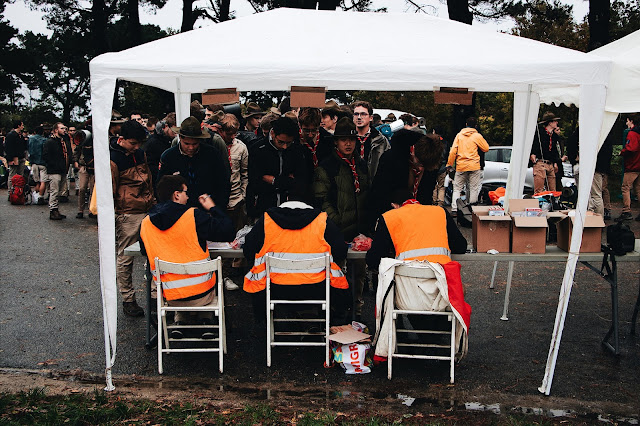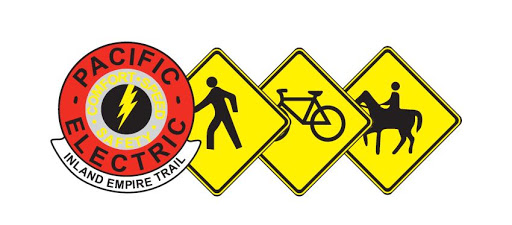 |
| Friends of the Pacific Electric Trail |
Hats off to the
City of Los Angeles for focusing on active and safe public space in the Melrose
district. StreetsLA, formerly
known as the Bureau of Street Services, is focused on making LA Streets safe, mobile,
and sustainable through innovation, inclusion, and integration. Their key programs address pavement preservation, street tree
and median maintenance, StreetsLA builds streetscape improvements that
enhance the safety, accessibility, mobility, and community satisfaction. This is inspiring news especially
during this COVID-19 pandemic when more people are riding bikes for
transportation, exercise, and fun. Working with neighbors, business owners,
Council District 5, and others in the community around Melrose Avenue, StreetsLA
has identified exciting and transformative improvements to the streetscape
between Fairfax and Highland Avenues, to Uplift Melrose and activate safe
public space on the streets of LA. They
hope that these improvements could be funded through a competitive Caltrans
grant program, the Active Transportation Program (ATP).
Uplift Melrose is a “Complete Streets”
roadway reconfiguration plan that seeks to encourage an increase in active
modes of transportation such as bicycling and walking by creating a safe and
comfortable pedestrian realm which includes room for bicycles, by disincentivizing pass-through
vehicular traffic, and by increasing the overall square footage of the
pedestrian portion of the Public Right of Way. The project area is the 22
blocks of Melrose Ave. between Fairfax Ave. and Highland Ave. This stretch of
Melrose falls within the City’s High Injury Network and is slated for separated
bikeways per the Los Angeles Mobility 2035 Plan.
The City of
Los Angeles High Injury Network spotlights streets with a high concentration of
traffic collisions that result in severe injuries and deaths, with an emphasis
on those involving people walking and bicycling. The network consists of the 6%
of LA’s streets where 65% of all deaths and severe injuries take place. People
walking and bicycling are the most at risk of being hurt or killed while moving
about the city. Nearly half of all traffic fatalities involve people walking
and bicycling. Our youth and older adults are particularly vulnerable. 30% of
those killed or severely injured while walking or bicycling are under 18 or
over 64 years of age. Of the 35 collisions in the project area within the last
10 years which resulted in severe injury or fatality, 17 involved car and
pedestrian/bicycle. LA’s Mobility Plan 2035, an update to the City’s General
Plan Transportation Element, provides the policy foundation for achieving a
transportation system that balances the needs of all road users. The Mobility
Plan 2035 calls for Separated Bikeways on Melrose Ave.
Some of the Uplift
Melrose project include Activated Pedestrian Public Space Separated Bikeways at
sidewalk grade Sidewalk Curb Extensions (AKA “bump-outs” at corners which will
reduce pedestrian crossing lengths for increased safety Average of approx. 8000
square ft of new pedestrian space per block (from approx. 3 acres to 7 acres
within entire project area) Raised East/West Crosswalks (AKA “speed tables”) for
pedestrians walking and riding Space for pedestrian amenities including more
lighting, trees, wayfinding signage, outdoor dining, landscaping, etc.
Significant reduction in the health hazards associated with urban heat due to
increased tree canopy cover Reduction in air pollution project pollution
tradeoffs, Roadway reconfiguration (fewer vehicular travel lanes) No left turns
off of Melrose for vehicles except at Fairfax, La Brea, and Highland Street
parking reduction.
In line
with Mayor Garcetti's goals to create a safe, livable and sustainable,
prosperous and well-run city, StreestLA performs a wide range of
planning, construction, maintenance, and enforcement activities to maintain the
City’s public works infrastructure and enhance the experience and quality of
life of City residents, visitors, and stakeholders. Street improvements
include curb ramps, sidewalks, pedestrian and bike facilities, bus landing
facilities, hardscaping and landscaping, and concrete construction to create a
more livable and sustainable city. As part of the Mayor's
Complete Streets Program, Complete Streets Program will improve the safety
of corridors in areas with the greatest need for repair, StreetsLA
provides street reconstruction, sidewalk repair, and damaged curb and gutter
repair to enhance the safety of motorists, pedestrians, and cyclists on city
streets.
In line with the Mayor's Great Streets Initiative to transform
streets into corridors of open space, StreetsLA will improve
pedestrian crosswalks, construct concrete curb extensions and median
islands, install street furniture, and plant trees to make City neighborhoods
safe, more accessible and beautiful for all to enjoy. Congratulations to the city of Los Angeles
and District 5 for recognizing the need for active transportation improvements
for your community to safely thrive. What are some improvements you would like to see in your neighborhood? Please comment below.
 |
| Friends of the Pacific Electric Trail |



























